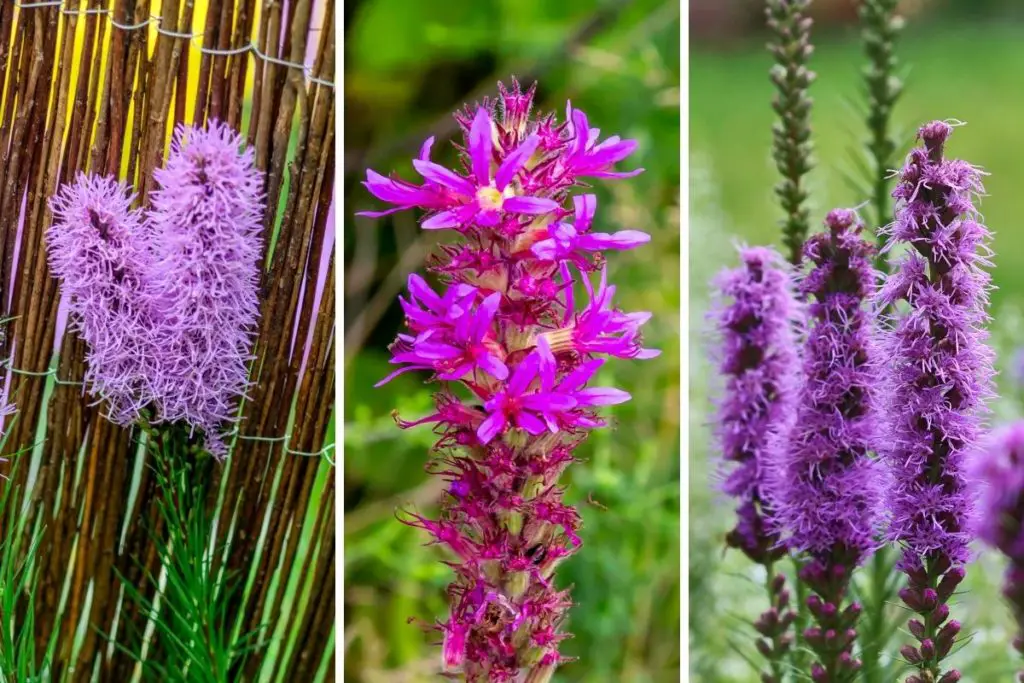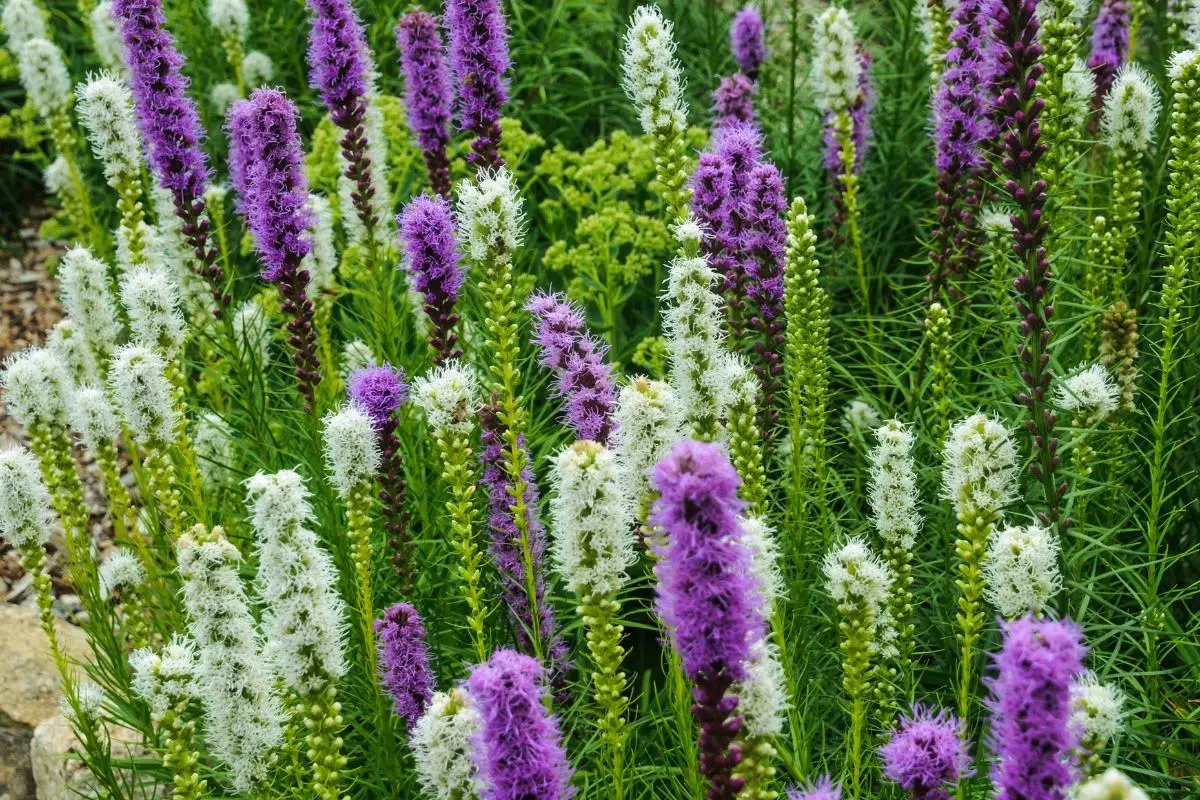Liatris comes in many different colors and varieties. Today, we are going to take a closer look at each of these colors and describe how they might complement your garden. Some varieties have exclusive colors while others are more likely to have a wider range of colors in their general appearance.
Table of Contents
What Colors Are Liatris?
The Liatris ‘blazing star’ is known for its exceptional dark purple and violet colors. Paired with dark green foliage, the vibrant purple flowers grow out like a blazing star and can catch the human eye from far away. While most blazing stars will always have a lavender tint in their color, you might be surprised to hear that some blazing stars can also grow in white.
White Liatris is definitely slightly rarer than the traditional variation. It’s better known as the ‘Floristan White’ blazing star. This particular variety of Liatris exclusively grows white flowers instead of purple ones.
On some occasions, other varieties of the Liatris ‘blazing star’ may have unique colors that don’t fall into the category of white or lavender. We will take a close look at some of the additional colors that you might expect to see from this ultra-unique perennial plant.
Liatris Color Variations
Since there are multiple varieties of blazing star, each comes with its own set of colors and appearances. Purple and white variations of blazing star are slightly more common than other colors and we will start by looking at ‘White Liatris’, also known as Liatris spicata ‘Alba’.
White Liatris
Liatris spicata ‘Alba’ is commonly found across North America, mainly in regions where temperatures and local weather conditions offer a prosperous climate for sensitive perennial plants like Liatris.
There is no doubt that ‘White Liatris’ is rarer than the common variety of Liatris spicata, but that doesn’t make it any less appealing or attractive to the human eye. It shares similar characteristics despite its color differences and is fully capable of growing as a companion to the other varieties of Liatris.
The ‘blazing star’ can be found across the United States and Canada. Liatris spicata varieties like ‘White Liatris’ are usually located and seen around prairies and meadows in the wilderness.
If you were an explorer, you would probably find the largest population of Liatris spicata ‘Alba’ in the later months of summer. You would ideally look in ideal regions around the beginning of July to find ‘White Liatris’ across eastern North America.
See the full article on White Liatris here.
Traditional Liatris Blazing Star
Common ‘Liatris’ can easily be identified by its bright purple and lavender colors that are immediately apparent. One of the reasons that the blazing star is pretty easy to identify is because it’s so vibrant and can be seen from large distances. Most commonly, you can find this particular variation of Liatris blooming in warm climates as a companion to other common Liatris varieties, as well as other flower types.
When the summer months finally arrive, you’ll notice sharp purple and lavender colors from the blazing star plants as they continue to grow and bloom. It has been dubbed ‘blazing star’ because of its vibrant appearance and because it can sometimes look like a shooting star up in the sky.
Paired with a size that spans to a height of around four feet, the vibrant dark purple colors that are found on traditional ‘Liatris spicata’ are not only beautiful and vibrant but also extremely soothing. In varied climates, it is also possible to have light pink and white flowers as well with this particular Liatris variety.
The colors of flowers like Liatris can be affected by the type of care that they receive. A lack of water or sunlight could slightly impact their color over time. In addition, poor soil conditions may also prevent them from reaching their full potential at full maturity.
If you want the best colors and the best-looking Liatris, you need to make sure that your Liatris is in ideal climate conditions and receives the appropriate amount of maintenance and care before it blooms.
Found this article interesting? Next, check out Gerbera Daisies: Annual or Perennial

What Affects The Colors of Liatris?
Liatris spicata can have its colors be impacted by several factors. This can include but is not limited to the amount of sunlight that it receives. Liatris also needs to receive a reasonable amount of water, either naturally or manually.
If you don’t provide Liatris with the types of maintenance and care that it needs, it can start turning a dry and unhealthy color. The natural vibrance in the colors may slowly fade into a dry and unhealthy look.
In some cases, your Liatris may even struggle to survive and grow. It is very important to take the care of your Liatris seriously so that you can enjoy the visual appearance when it blooms and matures, especially in the beginning stages.
One of my favorite things about Liatris is that it can attract butterflies! This is great for people who wish to have a butterfly garden or people who just want to attract them to their home or property. Source.
Frequently Asked Questions
Deep purple and lavender are extremely common for Liatris spicata. A pinkish tint can also find its way into some Liatris flowers depending on how it is cared for and how the local climate affects its growth.
The main reason the white Liatris is less common is that traditional Liatris can rapidly spread due to its massive population that is already found in Eastern North America. It would take an incredibly long time for the ‘White Liatris’ variety to ever catch up and overtake Liatris spicata in the overall population.
There are no solid blue Liatris colors. However, lavender-colored Liatris can sometimes be produced in certain types of Liatris. These sometimes have a little bit of a blue tint to them.

